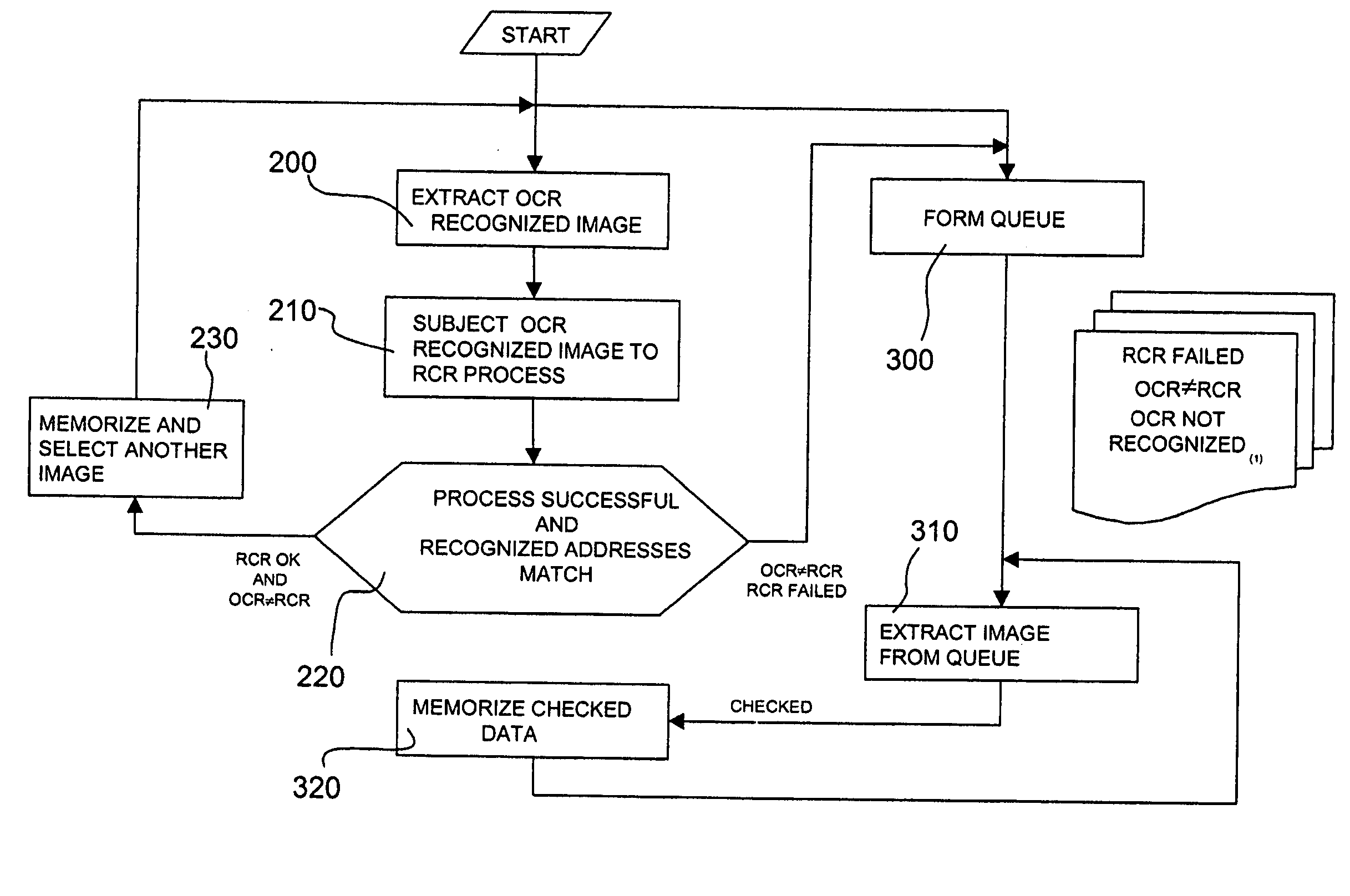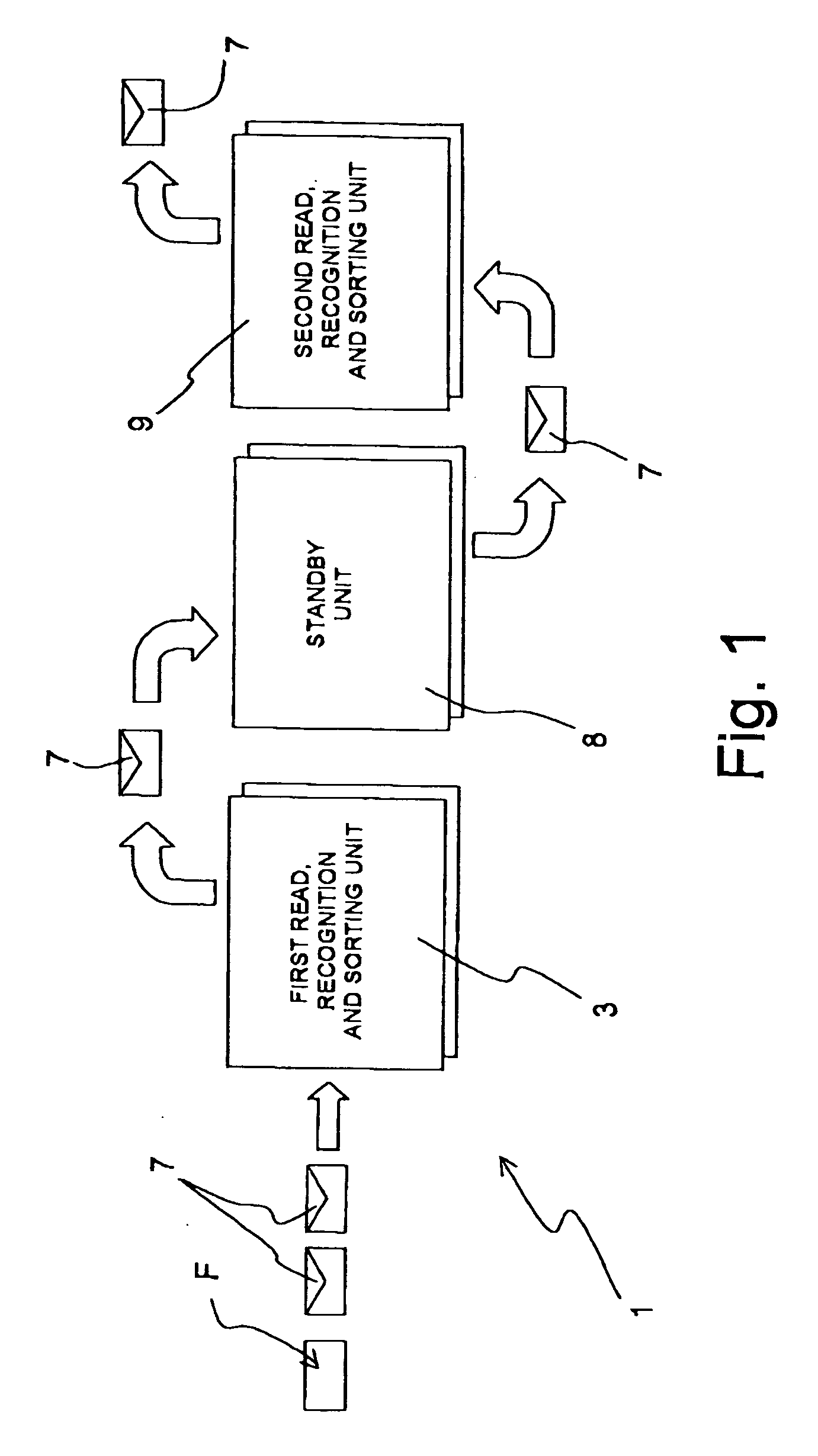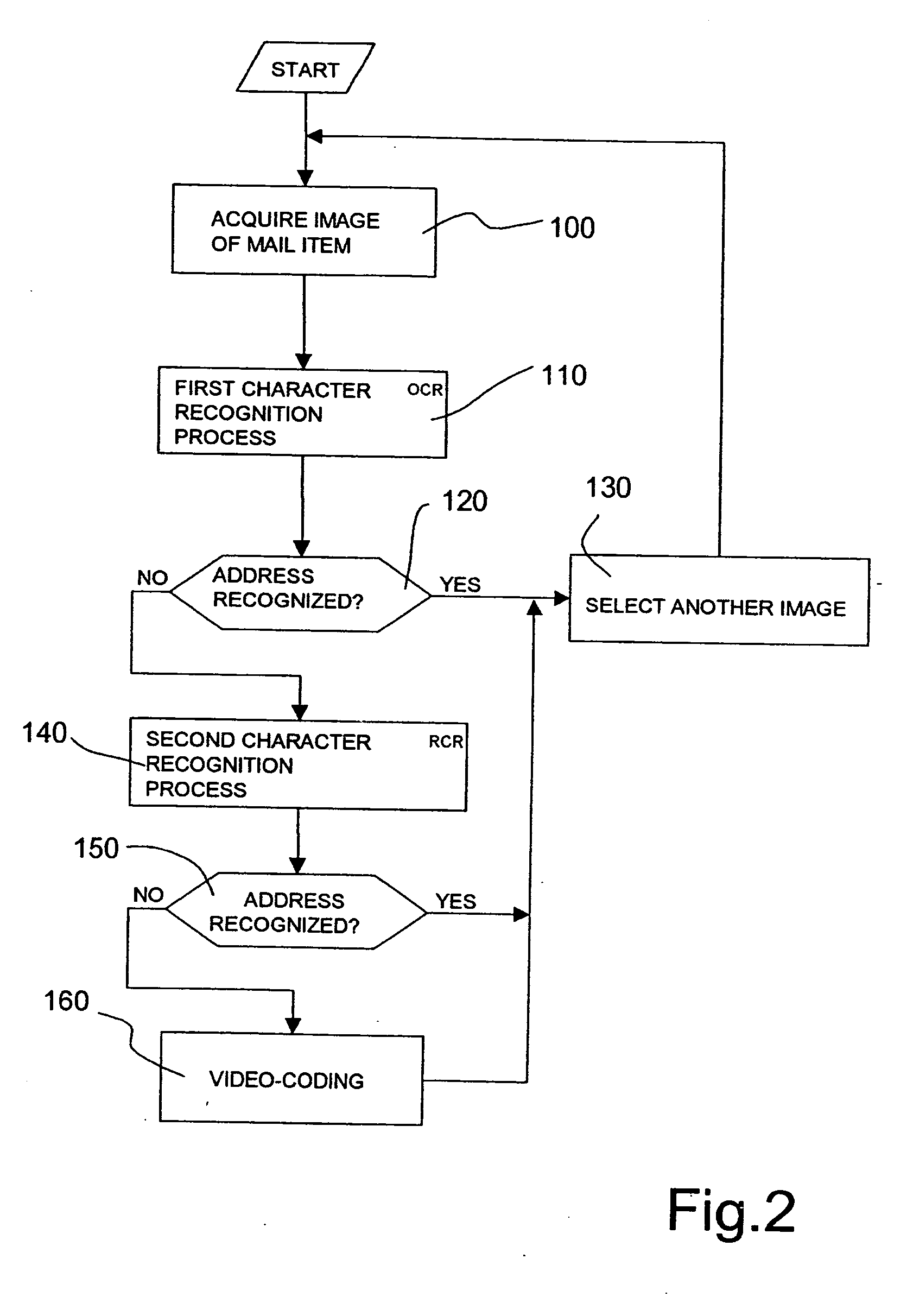Mail recognition method
a recognition method and recognition method technology, applied in the field ofmail recognition methods, can solve the problems of insufficient recognition and accuracy percentages to ensure successful follow-up mail processing, and achieve the effect of high accuracy and high recognition percentage of mail items
- Summary
- Abstract
- Description
- Claims
- Application Information
AI Technical Summary
Benefits of technology
Problems solved by technology
Method used
Image
Examples
Embodiment Construction
[0018] Number 1 in FIG. 1 indicates as a whole a mail processing system implementing the method according to the present invention.
[0019] More specifically, system 1 comprises: [0020] a first read, recognition and sorting unit 3 receiving a stream F of mail items 7 (letters, postcards, enclosed documents, flats, cellophane-wrapped magazines, unwrapped magazines, catalogues, etc.); [0021] a standby unit 8 receiving mail items 7 from first read, recognition and sorting unit 3; and [0022] a second read, recognition and sorting unit 9 receiving mail items 7 from standby unit 8.
[0023] The second read, recognition and sorting unit 9 emits mail items 7 (letters, postcards, enclosed documents, flats, cellophane-wrapped magazines, unwrapped magazines, catalogues, etc.), and possibly also sends them to other units (not shown) for performing known mail processing operations, such as a mail sequencing process.
[0024] The first read, recognition and sorting unit 3 performs the operations shown...
PUM
 Login to View More
Login to View More Abstract
Description
Claims
Application Information
 Login to View More
Login to View More - R&D
- Intellectual Property
- Life Sciences
- Materials
- Tech Scout
- Unparalleled Data Quality
- Higher Quality Content
- 60% Fewer Hallucinations
Browse by: Latest US Patents, China's latest patents, Technical Efficacy Thesaurus, Application Domain, Technology Topic, Popular Technical Reports.
© 2025 PatSnap. All rights reserved.Legal|Privacy policy|Modern Slavery Act Transparency Statement|Sitemap|About US| Contact US: help@patsnap.com



